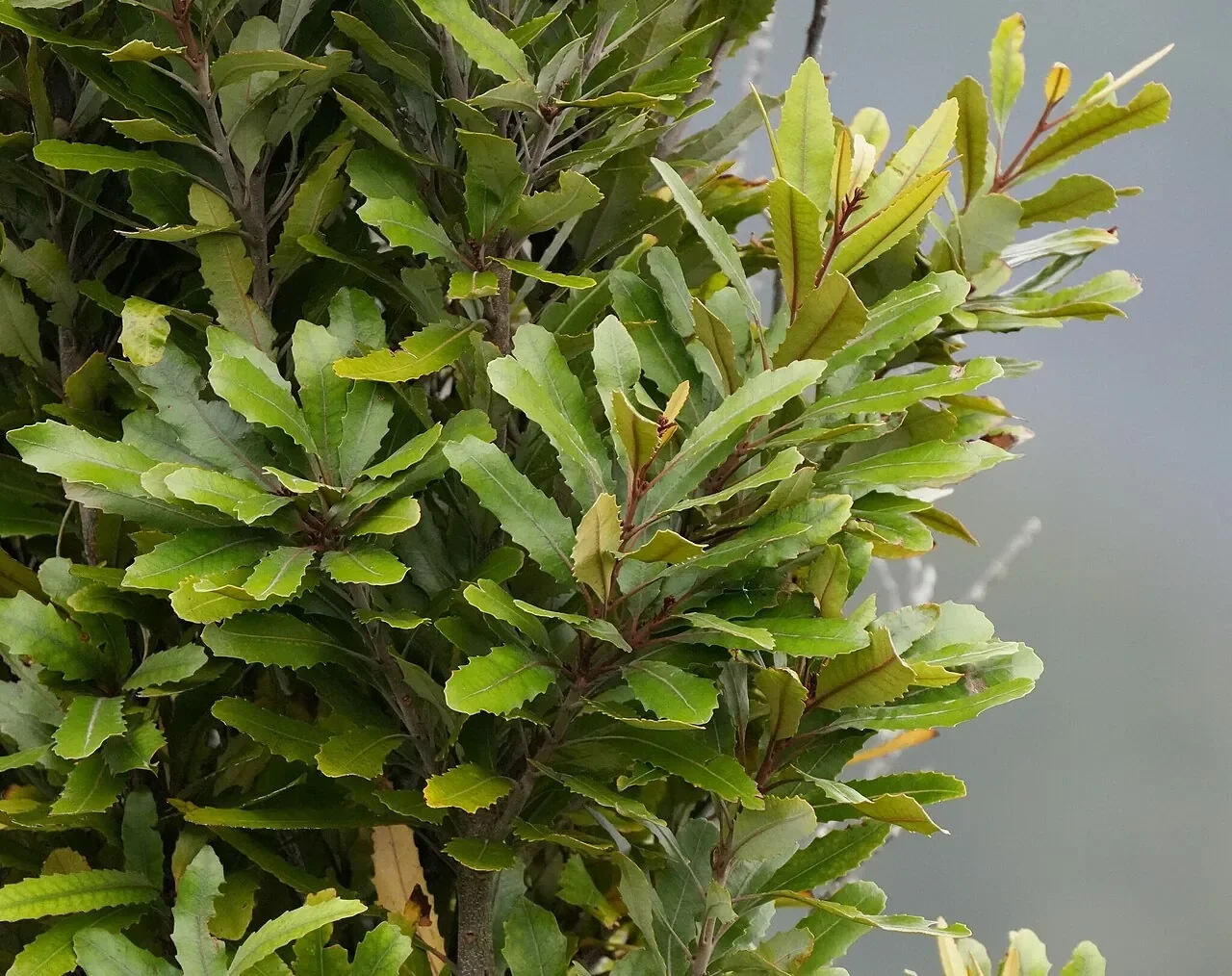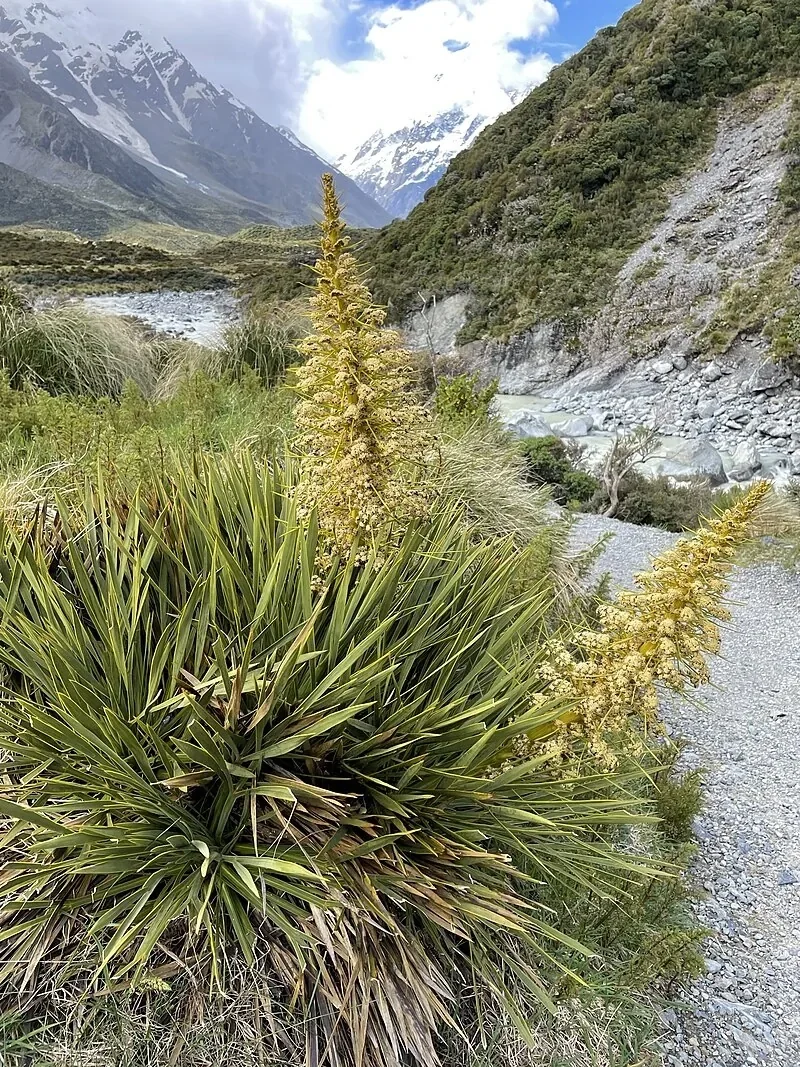
Rewarewa
Knightia excelsa
Introduction
Introduction Overview
Rewarewa ( Knightia excelsa ) is a tall, slender native New Zealand tree with striking red flowers and distinctive foliage. It can grow up to 30 meters tall and is valued for its ornamental beauty and as a source of nectar for birds and bees. The tree 's distinctive flowers appear in dense clusters and are particularly attractive to native birds such as tūī and bellbirds. Rewarewa is particularly well-suited to native trees collections and other coastal plants .

Plant Description
Botanical Features
Rewarewa ( Knightia excelsa ) is a distinctive native plant with unique botanical characteristics that make it well-suited to New Zealand's diverse environments. This species exhibits typical features of its genus and family, with specialized adaptations that allow it to thrive in its natural habitat. The plant 's morphological features, including its leaf structure, growth habit, and reproductive characteristics, reflect millions of years of evolution in New Zealand's isolated environment. Understanding the botanical description of Rewarewa helps gardeners appreciate its unique characteristics and provides insight into its cultivation requirements and ecological role.
Quick Facts
Key Features
| Scientific Name | Knightia Excelsa |
|---|---|
| Height | Up to 30 m |
| Spread | 3-5 m |
| Water Needs | Moderate (moist, well-drained soil) |
| Light | Full sun to partial shade |
| Frost Tolerance | Low to moderate (young trees sensitive) |
| Salt Tolerance | Low |
| Growth Rate | Moderate |
| Lifespan | Long-lived |
Climate Suitability
Natural Range
Knightia excelsa is found in lowland and lower montane forests of the North Island and northern South Island, thriving in warm, frost-free regions. The tree is particularly abundant in coastal and lowland areas where it forms an important component of native forest ecosystems. Its natural range extends from Northland to the northern South Island, with the tree being most common in areas with mild winters and adequate rainfall.
| City | Suitability |
|---|---|
| Whangārei | Ideal |
| Auckland | Ideal |
| Hamilton | Ideal |
| Tauranga | Ideal |
| Rotorua | Ideal |
| Gisborne | Ideal |
| New Plymouth | Ideal |
| Napier | Ideal |
| Whanganui | Ideal |
| Palmerston North | Ideal |
| Wellington | Ideal |
| Nelson | Ideal |
| Christchurch | Ideal |
| Dunedin | Ideal |
| Invercargill | Ideal |
Knightia (rewarewa) is best suited to warmer regions of New Zealand and may struggle in areas with severe frost.
Natural Habitat
Natural Habitat Overview
Knightia is naturally found in specific habitats throughout New Zealand. Understanding its natural environment helps in providing appropriate growing conditions in cultivation.
Plant Conservation
Knightia excelsa , commonly known as rewarewa, has a conservation status of "Not Threatened" as of 2023. This status has been consistent in assessments dating back to 2004. It is an evergreen tree endemic to New Zealand, found in the North Island and the Marlborough Sounds at the tip of the South Island.
Soil
Well-draining, fertile soil is best for rewarewa. The tree prefers rich, loamy soils with good organic matter content and thrives in the well-draining conditions typical of native forest environments. It can tolerate a range of soil types but performs best in fertile, well-draining conditions.
Light
Full sun to partial shade preferred. Rewarewa performs best in bright, open conditions where it receives plenty of light for optimal flowering. The tree can tolerate some shade but will flower more abundantly in full sun conditions.
Water
Consistent moisture , but avoid waterlogging. Rewarewa requires regular watering during establishment and benefits from consistent moisture during the growing season. Once established , it becomes more drought-tolerant but still appreciates regular moisture, especially during flowering periods.
Planting Guide
When to Plant
The best time to plant Knightia excelsa is during spring or autumn when soil temperatures are moderate and rainfall is reliable. These periods provide optimal conditions for root establishment and reduce stress on the young tree.
How to Plant
Dig a hole twice the width of the root ball and slightly deeper. Place Knightia excelsa in the hole, ensuring the root collar is at ground level, backfill with soil, and water thoroughly. Mulch around the base to retain moisture and suppress weeds. Choose a site that provides adequate space for the tree's mature size.
Ecological Role
Wildlife Interactions
Knightia excelsa (rewarewa) plays a vital role in New Zealand's forest ecosystems. Its abundant , nectar-rich flowers are a key food source for native birds such as tūī, bellbird, and silvereye, as well as for native bees and other pollinators. The tree 's seeds are eaten by birds, aiding in seed dispersal. Rewarewa's tall, slender form contributes to the vertical structure of native forests, providing shelter and nesting sites for birds and insects. Its deep root system helps stabilize soil on slopes and stream banks, reducing erosion. By supporting a diverse range of fauna and contributing to forest structure and stability, rewarewa enhances biodiversity and ecosystem resilience in both natural and restored habitats.
Uses and Significance
Uses and Significance Overview
- Habitat for native birds, particularly nectar-feeding species
- Source of nectar for honey production and native pollinators
- Ornamental and restoration planting in native gardens
- Timber production for woodworking and furniture
Rewarewa provides excellent shade, wind protection, and habitat for birds. Its distinctive timber has traditional uses in Māori culture, and the tree's flowers are a valuable nectar source for native wildlife.
Landscaping Uses
Landscaping Uses Overview
Knightia is highly valued in landscaping for its aesthetic appeal and practical benefits. It can be used in various garden styles and landscape applications.
Seasonal Care
Spring
- Mulch and water regularly as new growth begins
- Monitor for flowering and nectar production
Summer
- Check for pests and diseases during active growth
- Ensure adequate moisture during flowering period
Autumn
- Remove dead wood and collect seeds if desired
- Prepare for winter dormancy
Winter
- Protect young trees from frost damage
- Minimal care needed during dormancy
Pruning
Pruning Techniques
Prune after flowering to maintain shape and remove dead or damaged branches. Rewarewa responds well to pruning and can be shaped as needed, though its natural form is often most attractive.
Large trees require minimal pruning. Remove lower branches for clearance and dead wood for safety. The tree 's natural growth habit is generally tidy and requires little intervention once established.
How to Grow Rewarewa
Rewarewa, also known as New Zealand Honeysuckle, is a tall, slender native tree celebrated for its striking red flowers, distinctive foliage, and valuable timber. It is a prominent feature in lowland and montane forests of the North Island and northern South Island. Its unique flowers, which appear in dense clusters, are particularly attractive to native birds and bees, making it an important ecological resource. Rewarewa is a resilient and aesthetically pleasing tree that adds a touch of natural elegance and year-round interest to any landscape, showcasing the rich biodiversity of New Zealand's forests. Understanding its propagation methods is key to successfully growing this iconic species.
From Seed
Propagating Rewarewa from fresh seed is a viable method, though germination can be slow and may require stratification. Collect ripe seeds in autumn when they are mature. Clean the seeds thoroughly to remove any fleshy pulp. Sow the seeds in a tray filled with a well-draining seed-raising mix, lightly covering them. The seeds typically require a period of cold stratification (e.g., refrigerate for 2-3 months) to break dormancy. Maintain consistent moisture in the seed tray and keep it in a warm, sheltered location. Germination can take several weeks to months after stratification. Once seedlings have developed a few true leaves, they can be potted into individual containers and grown in a sheltered environment before planting out.
From Cuttings
Semi-hardwood cuttings are a more challenging method for propagating Rewarewa, but can be successful with careful attention to detail. Take 10-15 cm cuttings from healthy, semi-hardwood stems in late summer or early autumn. Remove the lower leaves and dip the cut end in a rooting hormone. Insert the cuttings into a well-draining propagation mix (e.g., sand and perlite). Keep the cuttings in a warm, humid environment, out of direct sunlight, perhaps under a plastic dome or in a propagator. Rooting typically occurs within 8-12 weeks, but success rates can be variable. Once rooted, the new plants can be potted on and grown in a sheltered environment until they are ready for planting.
Pests and Diseases
Common Pests
Knightia excelsa is generally resistant to most pests due to its native adaptations. However, it may occasionally be affected by common garden pests such as aphids or scale insects, particularly when stressed or in poor growing conditions.
Disease Prevention
To prevent diseases, ensure good air circulation around Knightia excelsa and avoid overwatering. Remove any diseased plant material promptly to prevent spread. The tree 's natural hardiness and adaptation to New Zealand conditions help it resist most disease problems.
Cultural Significance
Knightia excelsa , commonly known as Rewarewa, holds significant cultural importance for Māori in New Zealand.
Its Cultural Significance Is Evident in Several Traditional Uses:
- Food Source: The nectar from Rewarewa flowers was a traditional and important food source for Māori. They would collect the flowers in late spring and tap them into gourd vessels to gather the nectar.
- Traditional Medicine: The inner bark of the Rewarewa tree was used in traditional Māori medicine. It was applied as a bandage over wounds to stop bleeding and promote healing.
- Craft and Tools: The wood of the Rewarewa tree was utilized for carving and making tools. It was also used for posts in rivers, to create palisade walls, and in traditional waka (canoe) crafting, where a slow-burning trunk could be placed inside a tree to hollow out the center more easily.
- Ecological Role: Beyond direct utility, Rewarewa plays a vital role in New Zealand's forest ecosystems, providing habitat and food for various bird and insect species. Its nectar-rich flowers are a key food source for native birds like tūī, bellbirds, and silvereyes, which also act as pollinators. This ecological contribution further integrates it into the natural and cultural landscape.
Bonus Tip
A Bird-Friendly Bloom
The flowers of the Rewarewa are truly unique. They are long, tubular, and bright red, perfectly adapted for pollination by native New Zealand birds like the tūī and bellbird. These birds have long, curved beaks that are ideal for reaching the nectar deep within the flowers. As they feed, they transfer pollen from one flower to another, playing a vital role in the tree's reproduction.







